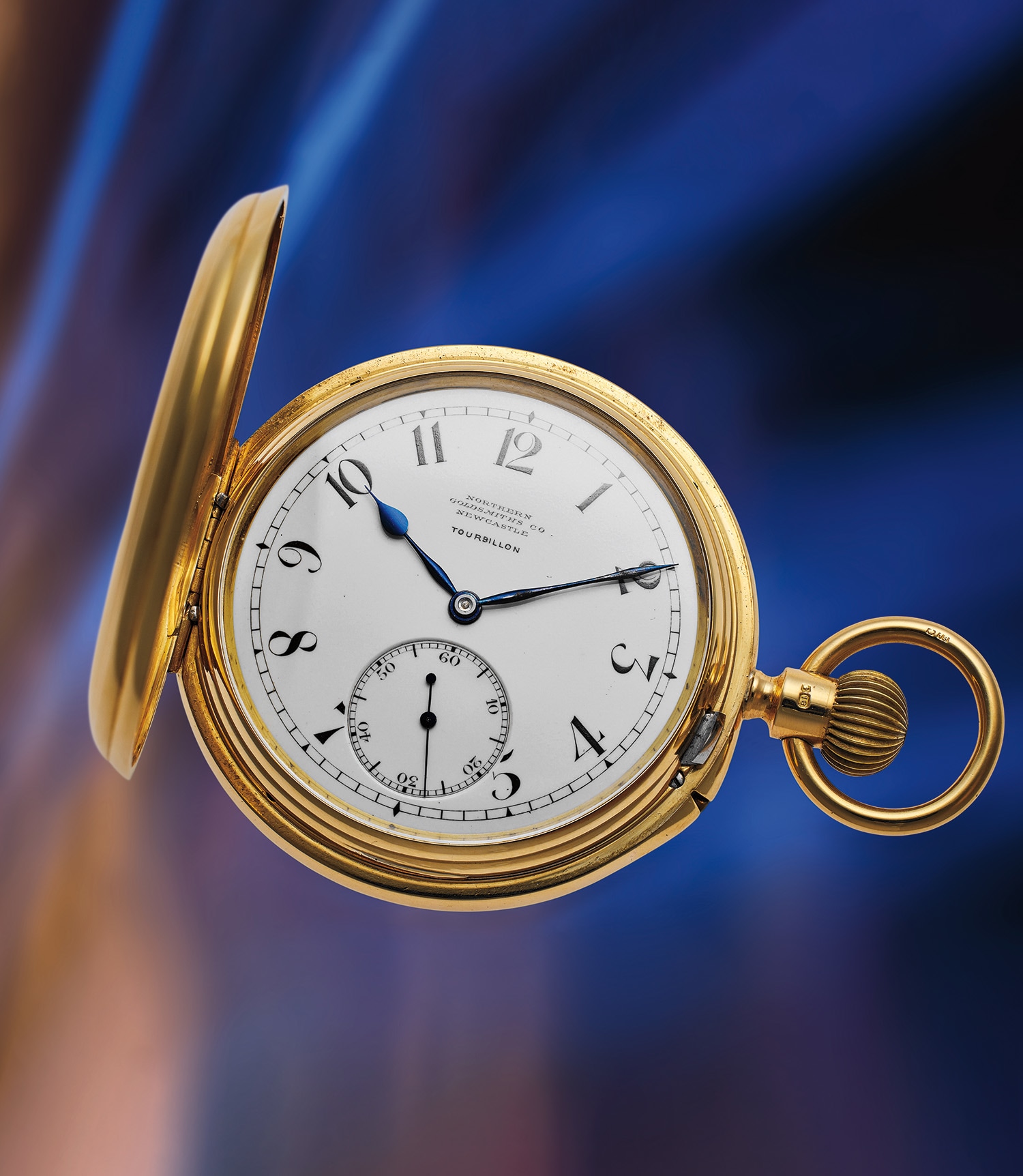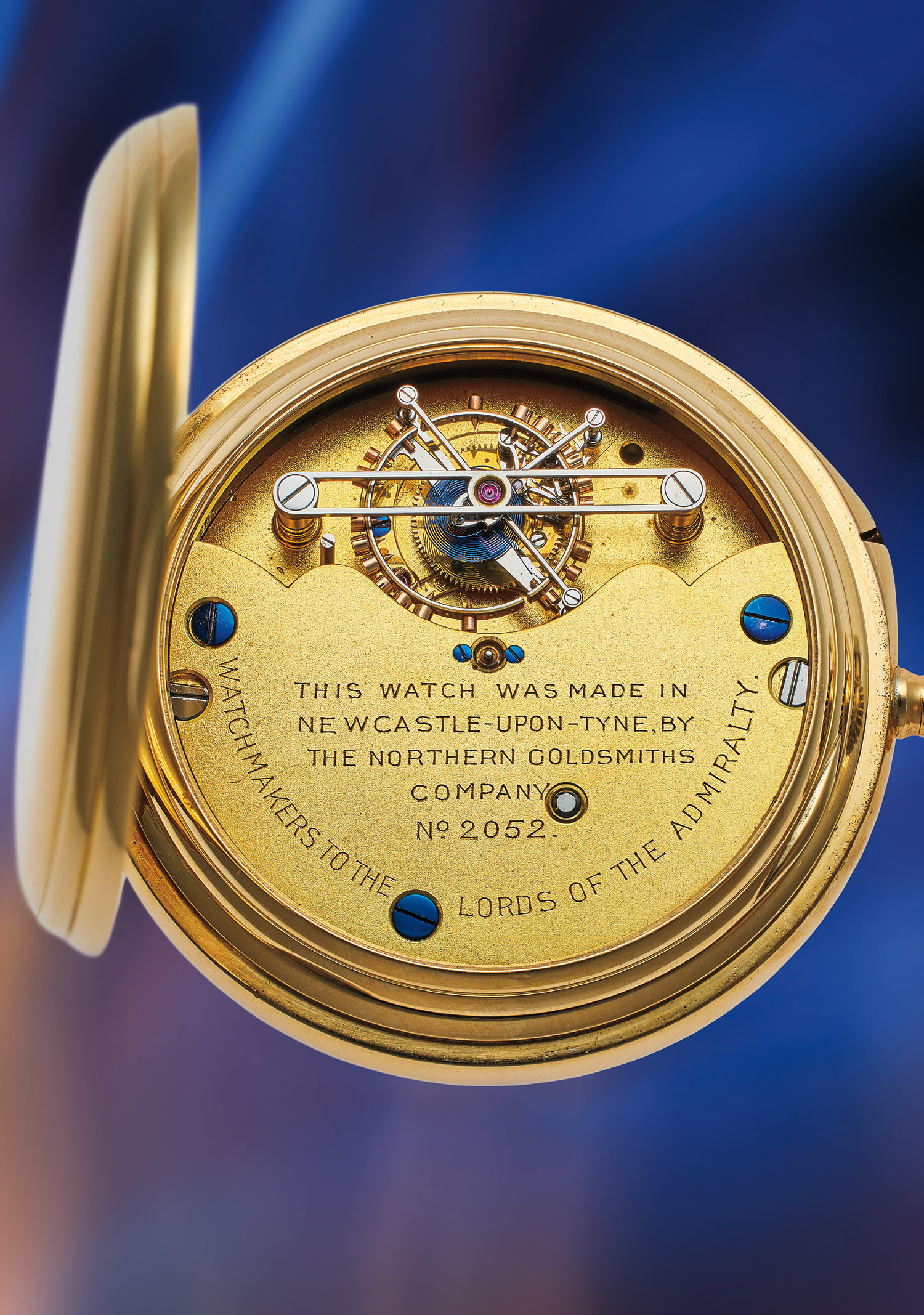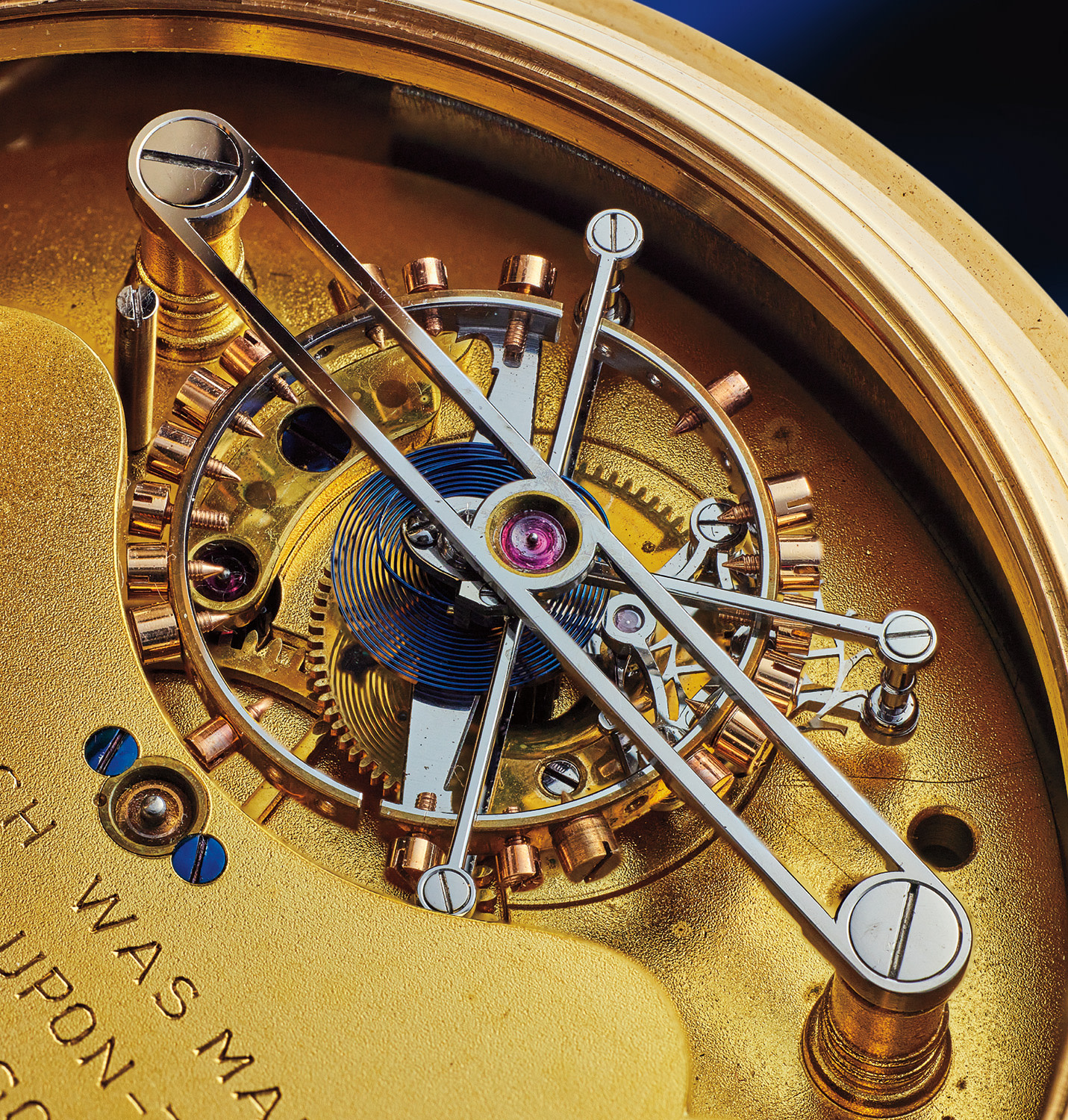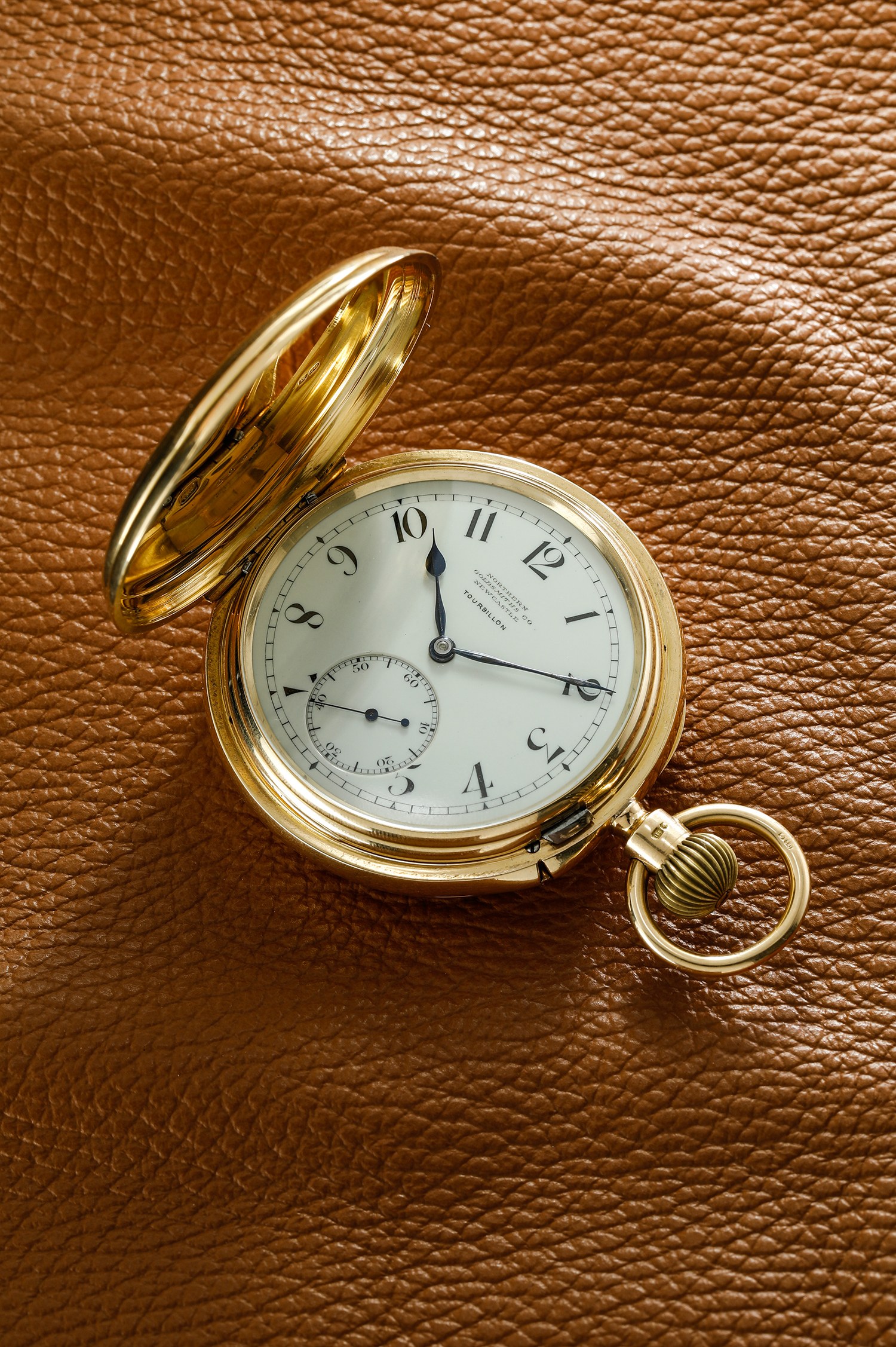







PROPERTY FROM A PRESTIGIOUS FAMILY COLLECTION
97
Northern Goldsmiths Company
An extremely rare and important yellow gold hunter cased pocket chronometer with eccentric one minute tourbillon regulator
Full-Cataloguing
Featured in multiple historically important horological tomes including George Daniels and Cecil Clutton’s Watches, and Reinhard Meis’, Das Tourbillon, the Northern Goldsmiths series of eccentric tourbillon pocket watches are widely considered as some of the finest and most accurate British watches made during the early 20th century.
One of only nine known examples of a possible 15 produced between 1917 and 1922, the present watch was sent to the Kew Observatory for testing in 1919, and received 89.2 marks, earning a Kew A “Especially Good” certificate. Housed within an extremely high-quality 18 karat yellow gold hunter case with 5-knuckle joints and a raised push piece, the frosted gilt three-quarter plate movement exhibits finest quality, hand-made details, such as jewels housed in screwed-in gold chatons, mirror polished bridges and tourbillon cage, and beautifully beveled gear axles.
The tourbillon escapement, of course is the star of the show. The polished steel double-arm bridge, referred to in scholarship as the “Better 1” design attributed to Sidney Better, and houses a “Better type-2” carriage with offset arms. Free-sprung and fitted with a blued steel balance wheel with terminal curve, the entire design was made for maximum timekeeping accuracy – and its Especially Good rating at Kew proves it. Beautifully preserved with its mesmerizing, eccentric tourbillon cage immediately captivating to the eye, it is an exceptional opportunity for the discerning collector.
One of only nine known examples of a possible 15 produced between 1917 and 1922, the present watch was sent to the Kew Observatory for testing in 1919, and received 89.2 marks, earning a Kew A “Especially Good” certificate. Housed within an extremely high-quality 18 karat yellow gold hunter case with 5-knuckle joints and a raised push piece, the frosted gilt three-quarter plate movement exhibits finest quality, hand-made details, such as jewels housed in screwed-in gold chatons, mirror polished bridges and tourbillon cage, and beautifully beveled gear axles.
The tourbillon escapement, of course is the star of the show. The polished steel double-arm bridge, referred to in scholarship as the “Better 1” design attributed to Sidney Better, and houses a “Better type-2” carriage with offset arms. Free-sprung and fitted with a blued steel balance wheel with terminal curve, the entire design was made for maximum timekeeping accuracy – and its Especially Good rating at Kew proves it. Beautifully preserved with its mesmerizing, eccentric tourbillon cage immediately captivating to the eye, it is an exceptional opportunity for the discerning collector.